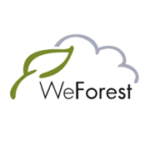Sustainability performance of Irish farms in 2022 revealed
To mark the opening of its Sustainability Month, Teagasc has released its latest sustainability report focusing on the year 2022. The report derives farm performance indicators from the Teagasc National Farm Survey to track the progress of Irish dairy, cattle, sheep and tillage farms in improving their economic, environmental and social sustainability. In addition to indicators for 2022, the report also includes data covering much of the last decade, to illustrate the changes that have occurred over the period.
Lead author of the report, Dr Cathal Buckley, Teagasc Rural Economy and Development Programme noted; “Dairying continues to exhibit a strong economic performance relative to other farm systems. We continue to see an increase in dairy output and dairy farm incomes. However, expressing farm incomes on a unit of family labour basis, Dairy and Tillage farms can be considered as relatively comparable in income terms. The results show that both of these farm system types considerably outperform the drystock farm systems in economic terms.”
Measured on a whole farm or per hectare basis, it is notable, that on average, Greenhouse gas (GHG) emissions across dairy, cattle, sheep and tillage declined in 2022 on the back of reduced chemical Nitrogen (N) fertiliser use. The report also illustrates the continuing adoption of actions to address gaseous emissions, particularly by dairy farmers. For example, in 2022, 34% and 75% of slurry on cattle and dairy farms respectively was applied to land using Low Emissions Slurry Spreading (LESS) equipment. However, the uptake of other desirable practices, such as a transition to lower GHG emission fertilisers, remains low.
Comparing farm performance for recent years, Trevor Donnellan, Head of the Agricultural Economics and Farm Surveys Department in Teagasc, and co-author of the report however noted: “From a socio-economic point of view, the improvement in farm incomes in 2022 makes a larger share of farms sustainable in an economic context”.
It is notable that even though herd sizes increased on dairy farms in 2022, on average GHG emissions on a whole farm and per hectare basis declined, largely due to a significant decrease in chemical N fertiliser use on dairy farms. However, ammonia emissions increased due to increased use of straight urea fertiliser on dairy farms.
Commenting on the release of the report, Teagasc Director, Professor Frank O’Mara, stated; “Teagasc research continues to develop and refine a range of technologies and farm management practices which can reduce the impact of agriculture on the environment. The Teagasc Signpost Programme will ensure that these solutions continue to be adopted by farmers. The Sustainability Report demonstrates how progress is already being made, and highlights where further improvements can be achieved. Critically the report demonstrates the multi-dimensional nature of sustainability in an economic, environmental and social context.”
The full 2022 Sustainability Report can be viewed Click here ...











